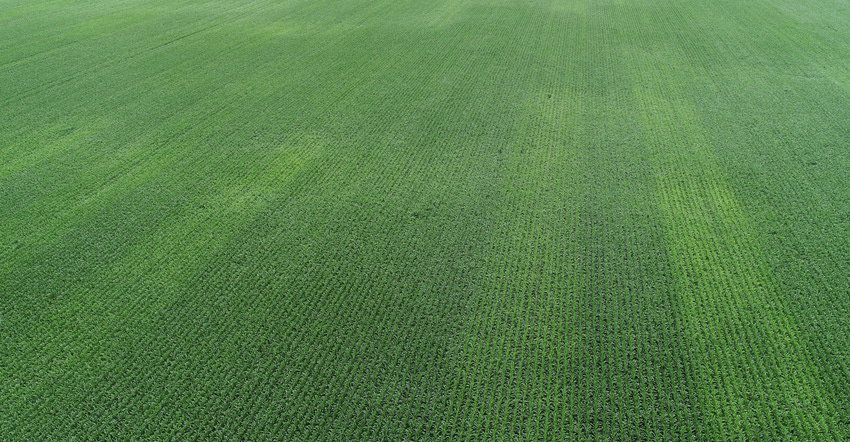February 25, 2019

I’m going to apply sulfur on all corn acres in 2019. Is that a wise investment? Assuming I apply sulfur, which source(s) should I use, and how and when should I apply it?
The Indiana certified crop adviser panel answering this question includes Gene Flaningam, Flaningam Ag Consulting LLC, Vincennes; Greg Kneubuhler, G&K Concepts, Harlan; and Tom Stein, manager of the Boswell and Templeton branches for Ceres Solutions Cooperative.
Flaningam: The sulfur needs for corn will depend upon soil type. Sandy soils require much more sulfur than a fine-textured silt or clay loam. Sulfur is mineralized from the soil organic matter as soil temperatures increase. It’s a good practice to add sulfur to your starter fertilizer program as ammonium thiosulfate: 12-0-0-26S. Rates of 3 to 5 gallons per acre placed next to or above the germinating seed are ideal for a starter practice.
A second option would be to broadcast ammonium sulfate, 21-0-0-24S, at or after planting. I’ve seen some good responses to topdressing with a high-clearance spinner. Sandy soils may benefit by the application of K-Mag, 0-0-18.2-22S, at planting or topdressed with a high-clearance spinner in combination with a urea blend. Ideally, 15 to 25 pounds per acre of sulfur is needed for a successful corn crop.
Kneubuhler: Similar to soybeans, sulfur is very beneficial to corn. If soil levels are depleted, as most are unless you’ve been addressing sulfur applications, we like to see around 25 pounds per acre of sulfur applied to the corn crop. Bulk scrubber gypsum or mined gypsum is a great way to build soil levels. However, cost and logistics is driving that option away. A very efficient and effective way to get sulfur to the corn crop is ammonium thiosulfate, 12-0-0-26S, used in starter fertilizer. However, pay attention to rates as, it will compound your salt load depending on rates used.
Supplemental sulfur can be applied in the form of ammonium thiosulfate during sidedress as well if you’re using liquid nitrogen. Broadcast applications of ammonium sulfate, 21-0-0-24S, or pelletized gypsum ahead of planting can be a great supplement in addition to ammonium thiosulfate in starter. That poses another logistical management issue. Elemental sulfur is an option with broadcast fertilizer as well as other sulfur-based products.
Working with a CCA to understand your options is best. The bottom line is that sulfur is extremely important, and there are multiple ways of getting sulfur into the system. It comes down to cost, availability and logistics.
Stein: You can expect the best return on investment from applying sulfur on sandy soils with low organic matter less than 1.5%. Since the rate of sulfur mineralization is a function of temperature, moisture and the carbon-to-sulfur ratio, conservation-tillage systems can also be a prime candidate for sulfur applications due to colder soil temperatures and higher C-S ratios.
I recommend taking some tissue tests so that you can maintain the proper nitrogen-to-sulfur ratio of 15-1 in the plant. A deficiency is possible even if there is adequate sulfur nutrition if the N-S ratio is out of balance. Commonly available sources for sulfur are elemental sulfur and sulfate sulfur, including ammonium sulfate, ammonium thiosulfate, gypsum or calcium sulfate, potassium sulfate, and potassium magnesium sulfate, which is K-Mag.
Use a source that will supply the crop in a form it can readily use as close as possible to peak demand. Corn uses sulfur throughout the entire growing season, nearly half of which is taken up after tasseling. However, early in the growing season is when sulfur availability is generally low and is a critical time for good sulfur nutrition. Ammonium thiosulfate fits that scenario well because about half of the sulfur in ATS is in the sulfate form, readily available for early plant growth, and the other half is in the elemental form, which will get converted to sulfate form for late-season uptake.
ATS is a very practical, cost-effective and convenient form of sulfur. Blend it with liquid nitrogen or water and apply it with your preemerge herbicides, or even sidedress it. I would perform a jar test to make sure there aren’t any compatibility issues.
A 200-bushel-per-acre corn crop will remove about 16 pounds of sulfur per acre for grain or 25 to 30 pounds per acre for silage. A good rule of thumb would be a broadcast application of 25 pounds of actual sulfur per acre on low-organic matter, sandy soils, and 15 pounds per acre of actual sulfur per acre broadcast on medium- to fine- textured soils.
You May Also Like




